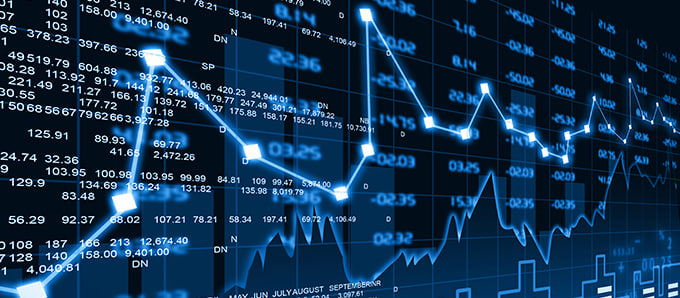G7's Oil Price Cap on Russia: A Tightening Noose or a Leaky Faucet? (Meta Description: G7, Russia, oil price cap, sanctions, energy security, global economy, Putin, Ukraine war, geopolitical implications)
Dive into the complex world of international sanctions and energy politics! The G7's oil price cap on Russia isn't just another headline; it's a high-stakes gamble with far-reaching consequences for global energy markets, geopolitical stability, and the ongoing war in Ukraine. This isn't your typical dry policy analysis; we're peeling back the layers of this intricate situation, revealing the strategic maneuvering, economic realities, and potential pitfalls involved. Think of it as a geopolitical thriller, unfolding before our very eyes. We'll explore the initial implementation, its successes and failures, the ongoing debates surrounding its efficacy, and the potential for future adjustments. Are we witnessing a decisive blow against Putin's war machine, or merely a symbolic gesture with limited impact? We'll examine the arguments from all sides, delving into the intricacies of international trade, supply chain dynamics, and the unpredictable nature of global oil markets. Prepare for a deep dive into the world of sanctions, where unintended consequences often outweigh initial expectations. This isn't just about numbers and policies; it's about the human cost of war, the struggle for energy independence, and the ever-present tension between economic pragmatism and moral imperative. Get ready to unravel the complexities of this crucial global issue and form your own informed opinion – because the stakes couldn't be higher. We'll cut through the jargon and deliver clear, concise analysis, empowering you to understand this crucial geopolitical chess match.
G7's Oil Price Cap on Russia: A Deep Dive
The G7's price cap on Russian oil, implemented in December 2022, aimed to curb Russia's revenue from oil exports while preventing a drastic spike in global oil prices. The idea was simple enough: set a maximum price for Russian crude, forcing buyers to adhere to it or face severe sanctions. However, the devil, as always, is in the details. This seemingly straightforward policy has proven far more nuanced and complex in practice. It's a bit like trying to herd cats – you can try to guide them, but ultimately, their independent nature often dictates the outcome.
The Mechanics of the Price Cap
The mechanism relies heavily on cooperation from participating countries and shipping companies. Essentially, G7 nations and their allies agree to only insure and finance shipments of Russian oil that are sold at or below the set price. This means that any country attempting to buy Russian oil above the cap faces significant logistical and financial hurdles, effectively making it too risky to pursue. This sounds straightforward, but several factors have muddied the waters.
- Enforcement Challenges: Monitoring compliance globally is a herculean task. Shadowy transactions and opaque shipping practices make it difficult to ensure everyone plays by the rules.
- Price Volatility: Fluctuations in global oil prices can make the price cap either overly restrictive or completely ineffective. If the market price falls below the cap, the mechanism becomes redundant.
- Russian Response: Russia has retaliated by reducing its oil production and exploring alternative markets, impacting global supply and potentially undermining the cap's effectiveness.
Impact on Global Oil Markets
The impact of the price cap has been a mixed bag. While some argue it has successfully limited Russia’s oil revenues, others contend that it has had a minimal effect, or even unintended negative consequences.
| Impact Area | Positive Outcomes | Negative Outcomes |
|---|---|---|
| Russian Revenue | Reduced export earnings for Russia | Russia finding alternative markets, potentially increasing overall global supply |
| Global Oil Prices | Prevented a significant price surge | Potential for price volatility and supply disruptions |
| Energy Security | Increased energy security for some G7 countries | Increased reliance on other suppliers, potentially creating new vulnerabilities |
| Geopolitical Relations | Strengthened Western unity against Russia | Created tension with countries not participating in the scheme |
The Ongoing Debate: Is It Working?
The effectiveness of the price cap remains a subject of intense debate. Some experts argue it's a crucial tool in weakening Russia's war machine, while others point to its limitations and suggest alternative approaches. Optimists highlight the reduction in Russian oil revenues, suggesting it's putting pressure on the Kremlin to end the war. Pessimists, however, emphasize the emergence of alternative markets for Russian oil and the potential for increased global oil prices due to supply disruptions. The debate is far from settled, and the long-term effects remain to be seen. It's a bit like a chess game – one move can trigger a chain reaction, making it difficult to predict the ultimate outcome.
Alternatives and Future Adjustments
Given the mixed results, the G7 is constantly evaluating the price cap's effectiveness and considering potential adjustments. This isn't a static policy; it's a dynamic tool that needs to adapt to the ever-changing landscape of the global energy market. Some proposed alternatives include:
- Strengthening enforcement mechanisms: Improving transparency and tracking of oil shipments.
- Adjusting the price cap: Regularly reviewing and adjusting the price cap to reflect market conditions.
- Expanding participation: Encouraging more countries to join the scheme.
- Exploring complementary sanctions: Targeting other aspects of Russia's energy sector.
The Human Cost
Beyond the economic and geopolitical implications, the price cap has profound human consequences. The war in Ukraine has already caused immense suffering, and the impact on global energy markets further exacerbates economic hardship for many. Energy poverty, food insecurity, and increased inflation are just some of the indirect consequences of this geopolitical conflict. This isn't just about numbers on a spreadsheet; it's about real people facing real challenges.
Frequently Asked Questions (FAQs)
-
What is the G7's oil price cap? It's a mechanism designed to limit the price of Russian oil sold globally, thereby reducing Russia's revenue from oil exports.
-
How does the price cap work? It relies on participating countries refusing to insure or finance oil shipments above the set price, making it financially and logistically challenging for buyers to exceed the cap.
-
Is the price cap effective? The effectiveness is debated, with some arguing it has successfully limited Russian revenue, while others point to its limitations and unintended consequences.
-
What are the potential consequences of the price cap? Potential consequences include reduced Russian revenue, price volatility, supply disruptions, and geopolitical tensions.
-
What are the alternatives to the price cap? Alternatives include strengthening enforcement, adjusting the price level, expanding participation, and exploring complementary sanctions.
-
What is the human cost of the price cap and the war in Ukraine? The war and its economic consequences, including the price cap, have led to widespread suffering, including energy poverty, food insecurity, and inflation.
Conclusion
The G7's oil price cap on Russia is a complex and evolving policy with far-reaching implications. While its effectiveness remains a subject of ongoing debate, it represents a significant attempt to curb Russia's war machine and address the geopolitical challenges posed by the conflict in Ukraine. The interplay of economic sanctions, global energy markets, and geopolitical strategy continues to unravel, making this a dynamic situation that requires careful monitoring and analysis. It's a story far from over, and the coming months and years will undoubtedly reveal further chapters in this ongoing geopolitical drama. The ultimate success or failure of this initiative will depend on a multitude of factors, including global cooperation, market dynamics, and the resilience of both Russia and the international community. One thing is certain: the stakes are incredibly high, and the consequences will be felt globally for years to come.



